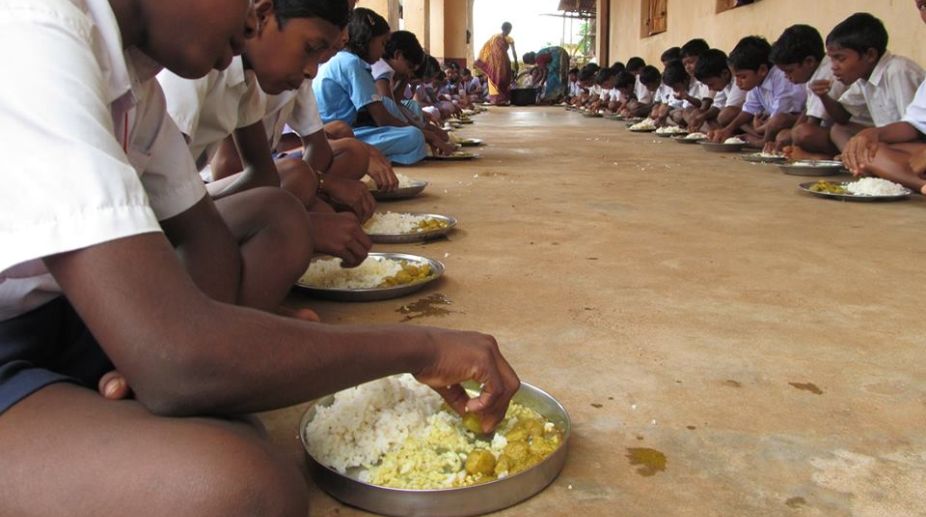Anand Sharma objects to caste census, says disrespect to legacy of Indira, Rajiv Gandhi
Sharma, who is a member of the Congress Working Committee (CWC), expressed his displeasure in a letter to Congress president Mallikarjun Kharge dated March 19.

In 1985, the then Prime Minister, Rajiv Gandhi, had said that out of every rupee spent by the government for welfare of the downtrodden, only fifteen paise actually reached the persons for whom it was intended. Quoting Rajiv Gandhi, the Supreme Court, in a recent judgment, allowed the linking of Aadhaar with PAN on the premise that this would lead to better administration of welfare schemes.
By quoting Rajiv Gandhi in its judgment, the Supreme Court has implicitly held that even today only a small percentage of welfare expenditure reaches the poor.
This would only mean that the situation on the ground has not changed even after 32 years ~ a long period in which we have tried out all hues of Government.
Advertisement
To illustrate, the current budget promises subsidies of Rs 2.40 lakh crore, welfare expenditure of an almost equal amount and agricultural credit of Rs.10 lakh crore; but even today 30 per cent of our countrymen live below the poverty line of Rs.1,000 per month and farmers are still at the mercy of money-lenders.
The Supreme Court, probably out of innate decency, did not elaborate as to what happens to the remaining eighty-five paise, but it is common knowledge that the remaining eighty-five paise are shared by corrupt politicians, bureaucrats and contractors.
Considering that ours is the third largest economy in the world and successive Budgets have allocated humongous funds for welfare schemes, we do have to introspect as to why we are so far from achieving the Millennium Development Goals for 2015? Doesn’t our poor record in human development appear anomalous vis-a-vis our military might?
Why do we lag behind countries like Pakistan and Sri Lanka in human development indicators like maternal mortality? However, it is a moot question whether linking of Aadhaar with various Government schemes would ensure successful implementation of welfare programmes.
Since October 2015, the Supreme Court had permitted the Government to use Aadhaar for 13 schemes like PDS, gas distribution, Mahatma Gandhi National Rural Employment Guarantee Scheme (MGNREGS), National Social Assistance Programme (Old Age Pensions, Widow Pensions, Disability Pensions), Prime Minister’s Jan Dhan Yojana (PMJDY ) and Employees’ Provident Fund Organisation (EPFO). However, till date, no substantial saving has been reported in any of these schemes. Some small savings have been reported but on the other hand there are reports to the effect that eligible beneficiaries have been excluded for their failure to obtain Aadhaar.
This would suggest that the existence of duplicate beneficiaries was not the main reason for leakage of welfare expenditure. Is there a way, then, of improving our human development indicators? In today’s language, the problem of benefits not reaching their intended beneficiaries is due to problems in last-mile connectivity.
To give an example: the CAG has pointed out that for the kharif crop of 2016, Fasal Bima Yojana premium of more than Rs.15,000 crore was deducted from loans advanced to farmers but payments of only Rs.5,000 crore were made to farmers. Thus a scheme to benefit farmers ended up benefiting insurance companies.
This is true for almost all schemes; banks routinely adjust subsidy for khadi weavers against loans advanced to them. Then there is downright corruption with lower level officials walking off with entitlements of the poor. Again, there is the problem of access to the Government.
Consider the case of India’s largest state, UP, which has a population of 22 crore. Uttar Pradesh is divided into 75 districts, which are further divided into 822 blocks, the smallest unit of administration, which means that each block caters to more than 2.50 lakh persons.
Thus, there is hardly anyone to monitor the outcome of the expenditure made under various welfare schemes vis-a-vis their beneficiaries and there is hardly anyone to advise the beneficiaries about how to claim their due benefits. The solution obviously lies in “Bringing the Government closer to the people” ~ a catchphrase repeatedly used in numerous Government documents.
Shortcut methods like asking district officials to camp at remote locations have often been tried but the Government is as far from the people as it was at the time of Independence.
The results of the inaccessibility of administration to the common man are obvious. Funds are siphoned off; beneficiaries of various Government schemes are not identified correctly, and finally bogus reports are sent to the Government.
The Government’s dilemma is palpable; in addition to making the size of Government unwieldy, our Budget would fail if the Government recruited enough people to carry administration to villages.
We should probably try out what Government agencies of other countries often do. We can temporarily hire first division graduates to go to the villages; compile statistics and assist villagers in claiming their due benefits. There can be one volunteer for every 500 families, who would be given a week’s training and asked to complete his job in one month. This process can be repeated every year.
It would be advantageous to everyone; the Government would get correct micro-level data, beneficiaries would be empowered and students would gain valuable field experience and insight.
We owe it to ourselves to try out every possible strategy to lift the poorest of our countrymen out of their ignorance, squalor and poverty and empower them to achieve their full potential because as Rajiv Gandhi once said, “Development is not about factories, dams and roads. Development is about people. The goal is material, cultural and spiritual fulfilment for the people. The human factor is of supreme value in development.”
(The writer is a retired Principal Chief Commissioner, Income Tax)
Advertisement